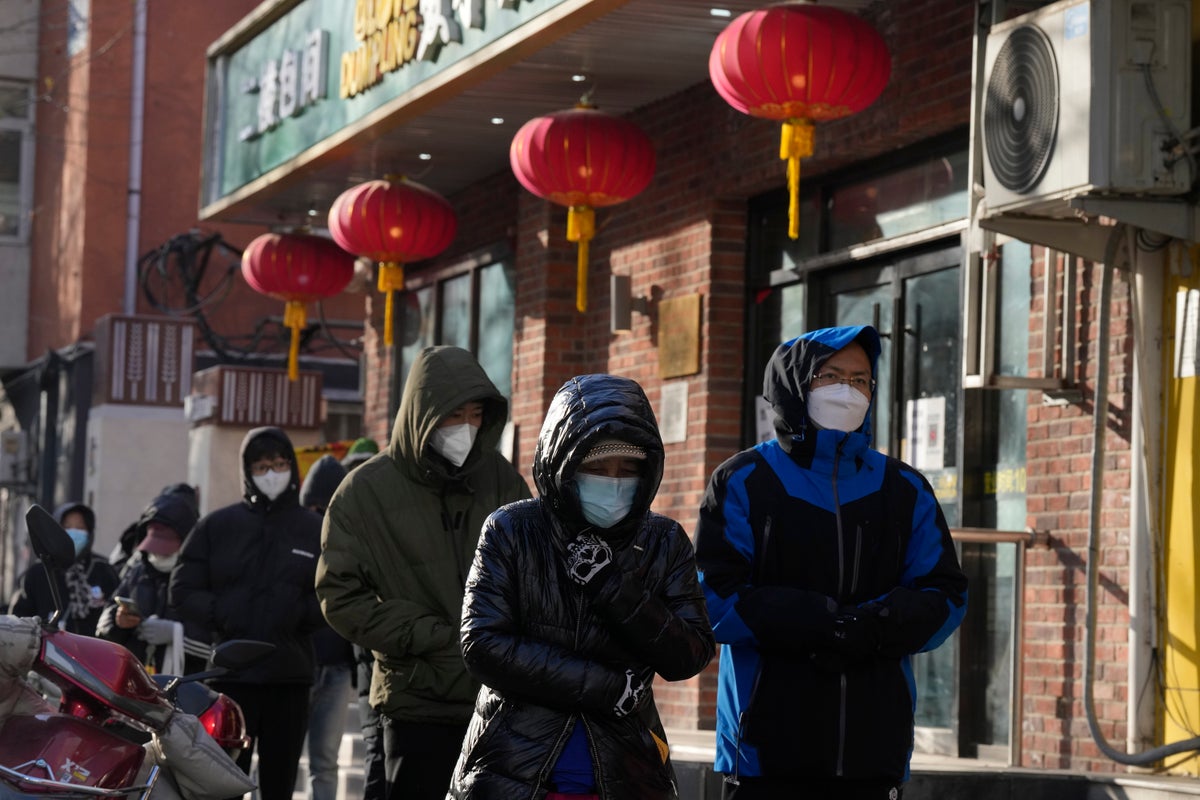
China’s National Health Commission scaled down its daily COVID-19 report starting Wednesday in response to a sharp decline in PCR testing since the government eased anti-virus measures after daily cases hit record highs.
A notice on the commission’s website said it stopped publishing daily figures on numbers of COVID-19 cases where no symptoms are detected since it was “impossible to accurately grasp the actual number of asymptomatic infected persons,” which have generally accounted for the vast majority of new infections. The only numbers they’re reporting are confirmed cases detected in public testing facilities.
This poses a key challenge for China as it relaxes its strict “zero-COVID” policy. With mass-PCR testing no longer obligatory and people with mild symptoms allowed to recuperate at home rather than in one of the field hospitals that became notorious for overcrowding and poor hygiene, it has grown more difficult to gauge the true number of cases.
Beijing's streets have grown eerily quiet, with lines forming outside fever clinics — the number of which has been increased from 94 to 303 — and at pharmacies, where cold and flu medications are harder to find.
Despite a push to boost vaccinations among the elderly, two centers set up in Beijing to administer shots were empty Tuesday except for medical personnel. Despite fears of a major outbreak, there was little evidence of a surge in patient numbers.
At the China-Japan Friendship Hospital’s fever clinic in Beijing, a dozen people waited for nucleic acid test results. Nurses in full-body white protective gear checked in patients one by one.
A few kilometers (miles) south, at Chaoyang Hospital, about a dozen people waited in a line of blue tents, deflecting winds amid subzero temperatures. One person in the queue took out a bottle of disinfectant and sprayed it around her as she waited.
Across the street at Gaoji Baikang Pharmacy, around a dozen people waited in line for cough medication and Chinese herbal remedies. A sign at the front told waiting customers: “Avoid panic and hoarding, we are doing all we can to stock up to fulfill your medicinal needs.” A man coming out had bought two packages of Lianhua Qingwen, a Chinese herbal remedy, saying that each customer was restricted from buying any more than that.
Inquiries to health hotlines have increased six-fold, according to state media.
Without asymptomatic cases being counted, China reported just 2,249 “confirmed” infections Wednesday, bringing the nation’s total to 369,918 — more than double the level on Oct. 1. It has recorded 5,235 deaths — compared with 1.1 million in the United States.
China’s government-supplied figures have not been independently verified and questions have been raised about whether the Communist Party has sought to minimize numbers of cases and deaths.
Since Tuesday, the U.S. consulates in the northeastern Chinese city of Shenyang and the central city of Wuhan have been offering only emergency services “in response to increased number of COVID-19 cases,” the State Department said.
President Xi Jinping’s government is still officially committed to stopping virus transmission. But the latest moves suggest the party will tolerate more cases without quarantines or shutting down travel or businesses as it winds down its “zero-COVID” strategy.
Despite relaxed rules, restaurants were mostly closed or empty in the capital. Many businesses are having difficulty finding enough staff who haven’t gotten infected. Sanlitun, one of Beijing’s most popular shopping districts, was deserted despite having its anti-COVID-19 fences taken down in recent days.
Hospitals have also reportedly been struggling to remain staffed, while packages were piling up at distribution points because of a shortage of China's ubiquitous motorized tricycle delivery drivers.
Some Chinese universities say they will allow students to finish the semester from home in hopes of reducing the potential for a bigger COVID-19 outbreak during the January Lunar New Year travel rush.
Starting Tuesday, China also stopped tracking some travel, potentially reducing the likelihood people will be forced into quarantine for visiting COVID-19 hot spots. Despite that, China’s international borders remain largely shut and there has been no word on when restrictions will be eased on inbound travelers and Chinese wanting to go overseas.
The move follows the government’s dramatic announcement last week that it was ending many of the strictest measures, following three years during which it enforced some of the world’s tightest virus restrictions.
Last month in Beijing and several other cities, protests over the restrictions grew into calls for Xi and the Communist Party to step down — a level of public dissent not seen in decades. The party responded with a massive show of force and an unknown number of people were arrested at the protests or in the days following.
Experts warn there still is a chance the party might reverse course and reimpose restrictions if a large-scale outbreak ensues.







